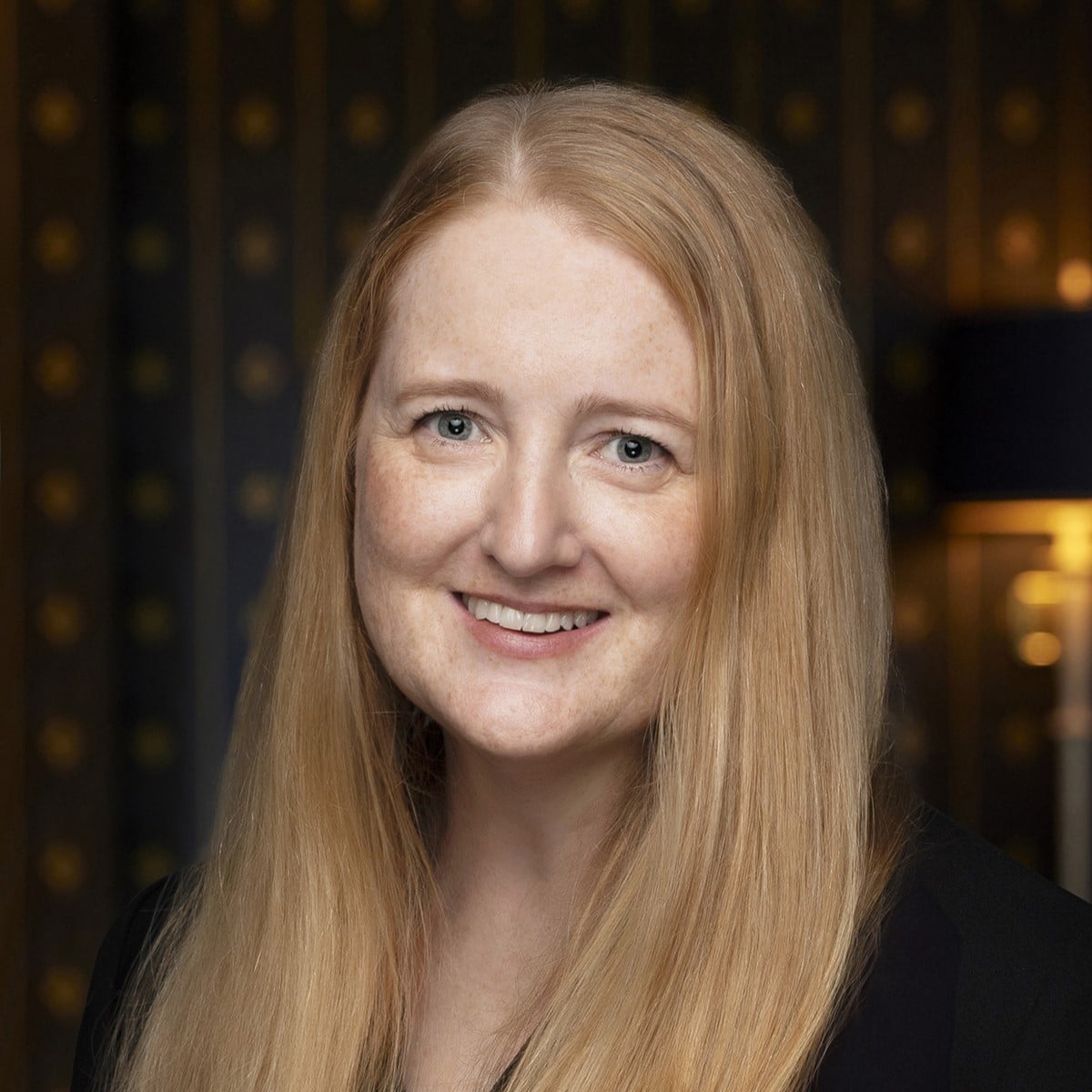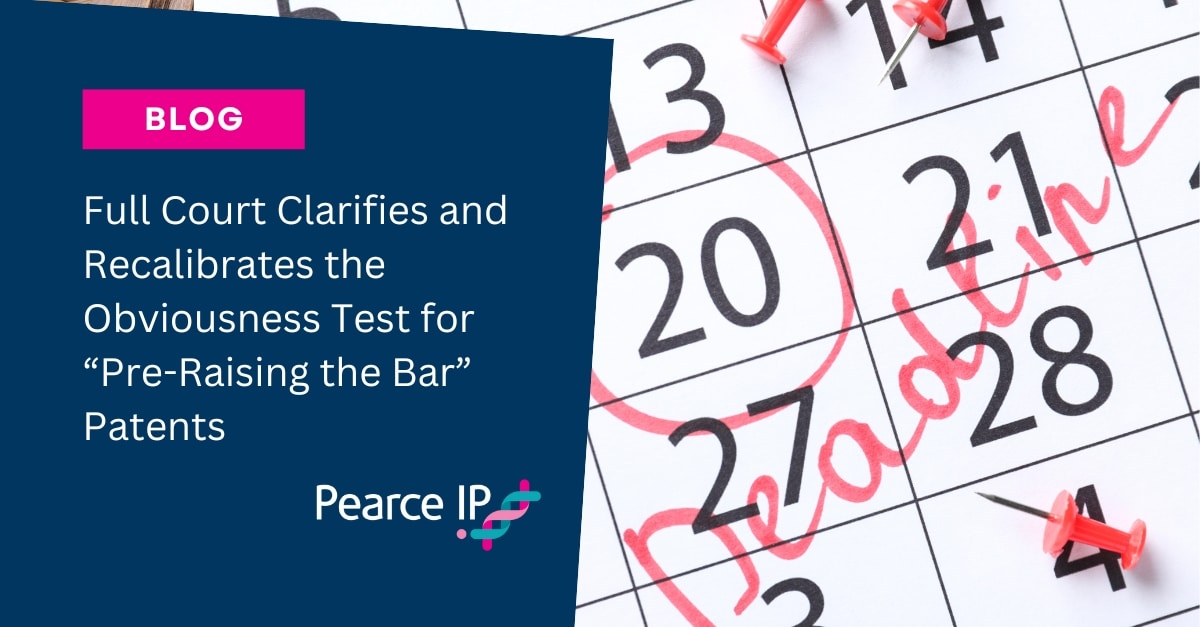| Date of decision: | 23 October 2024 |
| Body: | Full Court of the Federal Court of Australia |
| Adjudicator: | Justices Yates, Burley and Downes |
Sandoz has triumphed in its appeal regarding the validity of two of Bayer’s Australian Xarelto® (rivaroxaban) patents. On 23 October 2024, the Full Court unanimously overturned Justice Rofe’s decision of 2 November 2023, holding that the two Bayer patents lack an inventive step in light of the common general knowledge taken together with a prior art patent specification. The parties have been given until 4 November to propose orders giving effect to the Full Court’s decision.
Subject to Bayer applying for, and being granted, special leave to appeal to the High Court of Australia, the Full Court decision marks the end of the road for Bayer’s domination of the Australian rivaroxaban market. As we reported at the time of Justice Rofe’s decision (see here and here for our article and blog), 158 rivaroxaban products have been approved by the TGA (149 of them generic products). This number has not changed, although Teva and Alphapharm have now obtained PBS listing for generic rivaroxaban products. We would expect to see many more generic competitors moving swiftly to obtain PBS listing for, and launch, their rivaroxaban products in Australia.
In overturning Justice Rofe’s decision, the Full Court has clarified the bar that needs to be met to prove obviousness and has recalibrated the “ascertainment” test under the “pre-Raising the Bar” (pre-RTB) version of the Patents Act. This clarification and recalibration will not be welcome news for patentees but will be celebrated by companies seeking to challenge the validity of pre-RTB patents.
The Patents
The two Bayer patents in suit were:
- Australian Patent No. 2004305226, entitled “Method for the production of a solid, orally applicable pharmaceutical composition” (the 226 Patent). The 226 Patent is directed to orally administrable pharmaceutical compositions comprising rivaroxaban in hydrophilized form and the use of those pharmaceutical compositions for the prophylaxis and/or treatment of a thromboembolic disease; and
- Australian Patent No. 2006208613, entitled “Prevention and treatment of thromboembolic disorders” (the 613 Patent). The 613 Patent is directed to a method of treatment of thromboembolic disorders by once daily administration of a rapid-release tablet comprising rivaroxaban.
Appeal Grounds
Sandoz’s appeal was limited to appealing Justice Rofe’s obviousness finding, specifically raising the following three grounds of appeal:
- Ground One – Ascertainment: that Justice Rofe incorrectly found that a person skilled in the relevant art could not be reasonably expected to have ascertained International Patent Publication No. WO 01/47919 (WO 919) within the meaning of s 7(3) of the pre-RTB version of the Patents Act;
- Ground Two – CGK + WO 919 Obviousness: that Justice Rofe incorrectly found that the inventions claimed in each of the 226 Patent and the 613 Patent involved an inventive step in light of the common general knowledge (CGK) together with WO 919; and
- Ground Three – CGK + Blood Extracts Obviousness: that Justice Rofe incorrectly found that the invention claimed in the 613 Patent involved an inventive step in the light of the CGK together with Abstracts 3003, 3004 and 3010 published in the November 2003 supplement of Blood (the Blood Abstracts).
Sandoz succeeded on Appeal Grounds One and Two, resulting in Justice Rofe’s decision being overturned.
The Full Court’s Decision
Ground One – Ascertainment
Under the pre-RTB law, in order to rely on WO 919 to show lack of inventive step under s 7(3) of the Patents Act 1990 (Cth), Sandoz had to establish that the person skilled in the relevant art could be reasonably expected to have ascertained, understood and regarded WO 919 as relevant. This requirement no longer applies under post-RTB law.
At first instance, Justice Rofe had been critical of Sandoz’s evidence on “ascertainment”. Justice Rofe considered that Sandoz had taken an impermissible “short cut” in its evidence, including because:
- its evidence of a hypothetical literature search conducted by a patent searcher for the purpose of the litigation was limited to one search term (“factor Xa inhibitors”) and one database, when Sandoz’s expert witness (Professor Roberts) had said he would have conducted searches on more than one database and with a number of search terms; and
- Professor Roberts was provided with a spreadsheet of search results and identified 190 of the 218 search results as being “top priority”, including WO 919. However, he had not been provided with copies of any of those documents to consider.
In these circumstances, Justice Rofe said: “The question of whether Professor Roberts would have selected WO 919 if he was provided with the full suite of results from searches undertaken across all his suggested databases, and with broader search terms than just “factor Xa inhibitors”” could not be answered on the evidence before her.
The Full Court held that Justice Rofe had fallen into error in determining lack of ascertainment for WO 919, in particular because:
- The standard imposed by s 7(3) does not require proof that the hypothetical skilled person would ascertain the document. Rather, it requires proof sufficient to demonstrate a reasonable expectation that the skilled person would do so, on the balance of probabilities.
- In this case, the evidence established that the person skilled in the art would have conducted searches of (inter alia) the patent database using search terms including “factor Xa inhibitors”. Contrary to the submission by Bayer, it therefore did not matter that the skilled person would have also conducted searches using additional search terms.
- In relation to Bayer’s complaint that Professor Roberts was not provided with all of the documents which he identified from the spreadsheet as being “top priority” the Full Court said it was not necessary for evidence to be adduced that the skilled person would prefer, prioritise or select WO 919 over all other information which they could be reasonably expected to have discovered or found out, including other information which was not adduced into evidence
- Despite accepting that it was not necessary in every case for a literature search to be carried out in order to establish the “ascertainment” requirement, Justice Rofe required, in effect, that such a search be performed, and that Professor Roberts select WO 919 from the broader array of search results.
- In summary, it was not to the point that additional searches might have been performed (including by reference to additional search terms), or that the skilled person could also be expected to have found additional documents or information, or that the skilled person would have been required to review such additional documents or information. This was especially the case as Bayer had led no evidence to suggest that a reasonable search of a patent database would not have found WO 919, or that WO 919 would not have been identified out of a broader search involving other databases or search terms, or that WO 919 would not have been identified as being relevant upon being reviewed.
Ground Two –CGK + WO919 Obviousness
In holding that the inventions claimed in each of the 226 Patent and the 613 Patent involved an inventive step (were not obvious) in light of the CGK together with WO 919, Justice Rofe accepted the evidence that:
- WO 919 would be of interest and value to a drug development team seeking to develop a new antithrombotic drug and that, on reading WO 919, the skilled reader would focus in particular on rivaroxaban because it was listed as a particular chemical, discussed in examples and the only compound the subject of a claim; and
- the skilled person reading WO 919 would be likely to select rivaroxaban as a or the lead candidate, to take into further drug development work which would involve the full suite of pre-clinical tests required in order to consider whether rivaroxaban was suitable to take into Phase I, first-in-human trials.
Justice Rofe then went on to apply the well accepted “reformulated Cripps question”; that is: whether the person skilled in the art at the relevant date with the relevant knowledge would directly be led, as a matter of course, to try the claimed invention in the expectation that it might well produce a useful alternative to, or a better drug than, the existing compound. Applying this test, Justice Rofe held that:
- the well-known standard series of steps of a drug development pathway were not “routine steps”; and
- Bayer’s drug development journey was more akin to a “voyage of discovery” than the “working towards the invention with an expectation of success”.
The Full Court disagreed with her Honour’s application of the reformulated Cripps question, finding, in summary that:
1. Routine Steps: In the field of drug development, the need to carry out clinical trials and other tests in order to obtain relevant data can be regarded as routine work consistent with a finding of obviousness. In the Full Court’s opinion, Justice Rofe had applied the incorrect test by:
- placing too much emphasis on the “risks and unknowns” associated with the pre-clinical and clinical tests, which would have been undertaken as a matter of course following the selection of rivaroxaban as a lead candidate. In this regard, the Full Court noted that, notwithstanding those risks and uncertainties, Justice Rofe had found that the skilled person reading WO 919 was likely to select rivaroxaban as a or the lead candidate to take into further drug development work; and
- determining that those steps, which followed such a selection, would not be “routine”. In this regard, the Full Court noted that there was no evidence before Justice Rofe, and that her Honour made no finding, that any particular problem, difficulty or issue would have been expected to have arisen or would have arisen during the pre-clinical and clinical trials which would conventionally be carried out following the selection of rivaroxaban as a lead candidate. There was also no evidence, or finding, that the formulation of rivaroxaban in the 226 Patent or its dosage regime adopted in the 613 Patent would not have been identified during the course of these trials.
2. Expectation of Success: The Full Court held that the relevant expectation is to be measured against the ordinary level of expectation and risk inherent in routine work in the particular field. The relevant test is not knowing that steps will or would or even may well work, but merely expecting that the steps may well work. In the Full Court’s opinion, Justice Rofe had applied the incorrect test by:
- using language which indicated that, to have the requisite expectation, the person skilled in the art would need to be able to make predictions as to efficacy, side effects and safety or adverse events and toxicities and that, in order to have the requisite expectation, the research project could not be unpredictable; and
- requiring that it be demonstrated that the person skilled in the art would have the requisite expectation at each stage of the drug development process, such that they need to have an expectation that the chosen compound would pass through all the drug development stages.
Ground 3 – Disclosure of Blood Abstracts
Ground three related to the nature of the disclosure in other s7(3) documents, collectively referred to as the Blood Abstracts. Justice Rofe had found that the Blood Abstracts could be reasonably expected to have been ascertained, understood, and regarded as relevant by the person skilled in the art. However, it was held that there was no disclosure of rivaroxaban in the Blood Extracts as they referred to rivaroxaban as “BAY 59-7939”, and that reference was not CGK.
Although the Full Court did not need to consider this ground given the findings on the first two grounds, the Full Court, in obiter, agreed with Justice Rofe that there was no disclosure of rivaroxaban in the Blood Abstracts.
Conclusion
The Full Court’s decision is significant for both patentees and patent challengers. The Full Court has clarified the bar that needs to be met to prove obviousness and has recalibrated the bar that needs to be met to meet the “ascertainment” test under the “pre-Raising the Bar” version of the Patents Act. This clarification and recalibration will not be welcome news for patentees but will be welcomed by companies seeking to challenge the validity of “pre-Raising the Bar” patents.
Given the decision’s importance both legally and commercially, Bayer may apply for special leave to appeal to the High Court of Australia. In the meantime, generic competitors may now move swiftly to obtain PBS listing for, and launch, their rivaroxaban products in Australia.
About Pearce IP
Pearce IP is a specialist firm offering intellectual property specialist lawyers and attorneys with a focus on the life sciences industries. Pearce IP and its leaders are ranked in every notable legal directory for legal, patent and trade mark excellence, including: Chambers & Partners, Legal 500, IAM Patent 1000, IAM Strategy 300, MIP IP Stars, Doyles Guide, WTR 1000, Best Lawyers, WIPR Leaders, 5 Star IP Lawyers, among others.
In 2025, Pearce IP was recognised by Australasian Lawyer and New Zealand Lawyer’s 5 Star Employer of Choice, and is the “Standout Winner” for inclusion and culture for firms with less than 100 employees. Pearce IP was awarded “IP Team of the Year” by Lawyers Weekly at the 2021 Australian Law Awards. Pearce IP is recognised by Managing IP as the only leading ANZ IP firm with a female founder, and is certified by WEConnect International as women owned.

Naomi Pearce
CEO, Executive Lawyer (AU, NZ), Patent Attorney (AU, NZ) & Trade Mark Attorney (AU)
Naomi is the founder of Pearce IP, and is one of Australia’s leading IP practitioners. Naomi is a market leading, strategic, commercially astute, patent lawyer, patent attorney and trade mark attorney, with over 25 years’ experience, and a background in molecular biology/biochemistry. Ranked in virtually every notable legal directory, highly regarded by peers and clients, with a background in molecular biology, Naomi is renown for her successful and elegant IP/legal strategies.
Among other awards, Naomi is ranked in Chambers, IAM Patent 1000, IAM Strategy 300, is a MIP “Patent Star”, and is recognised as a WIPR Leader for patents and trade marks. Naomi is the 2023 Lawyers Weekly “IP Partner of the Year”, the 2022 Lexology client choice award recipient for Life Sciences, the 2022 Asia Pacific Women in Business Law “Patent Lawyer of the Year” and the 2021 Lawyers Weekly Women in Law SME “Partner of the Year”. Naomi is the founder of Pearce IP, which commenced in 2017 and won 2021 “IP Team of the Year” at the Australian Law Awards.

Helen Macpherson
Executive, Lawyer (Head of Litigation –Australia)
Helen is a highly regarded intellectual property specialist and industry leader with more than 25 years’ experience advising on patents, plant breeder’s rights, trade marks, copyright and confidential information. She is known for her expertise in complex, high-value patent matters and leverages her technical background in biochemistry and molecular biology to work across a wide range of technologies, including inorganic, organic, physical and process chemistry, biochemistry, biotechnology (including genetics, molecular biology and virology), and physics. Helen is an active member of the Intellectual Property Committee of the Law Council of Australia and the Intellectual Property Society of Australia and New Zealand.

Chantal Savage
Special Counsel, Lawyer
Chantal is an intellectual property disputes lawyer with experience advising across the spectrum of IP rights, including patents, trade marks, copyright, plant breeder’s rights and trade secrets/confidential information. Recognised as a Rising Star in IP by the Legal 500 Asia Pacific (2021-2024), Chantal has previously worked for international and top tier law firms in Australia and the United Kingdom and now at Pearce IP.
With a science degree specialising in molecular biology and biochemistry, Chantal’s practice focuses particularly on complex, high-value, multi-jurisdictional patent infringement and revocation proceedings for clients in the life sciences sectors.

